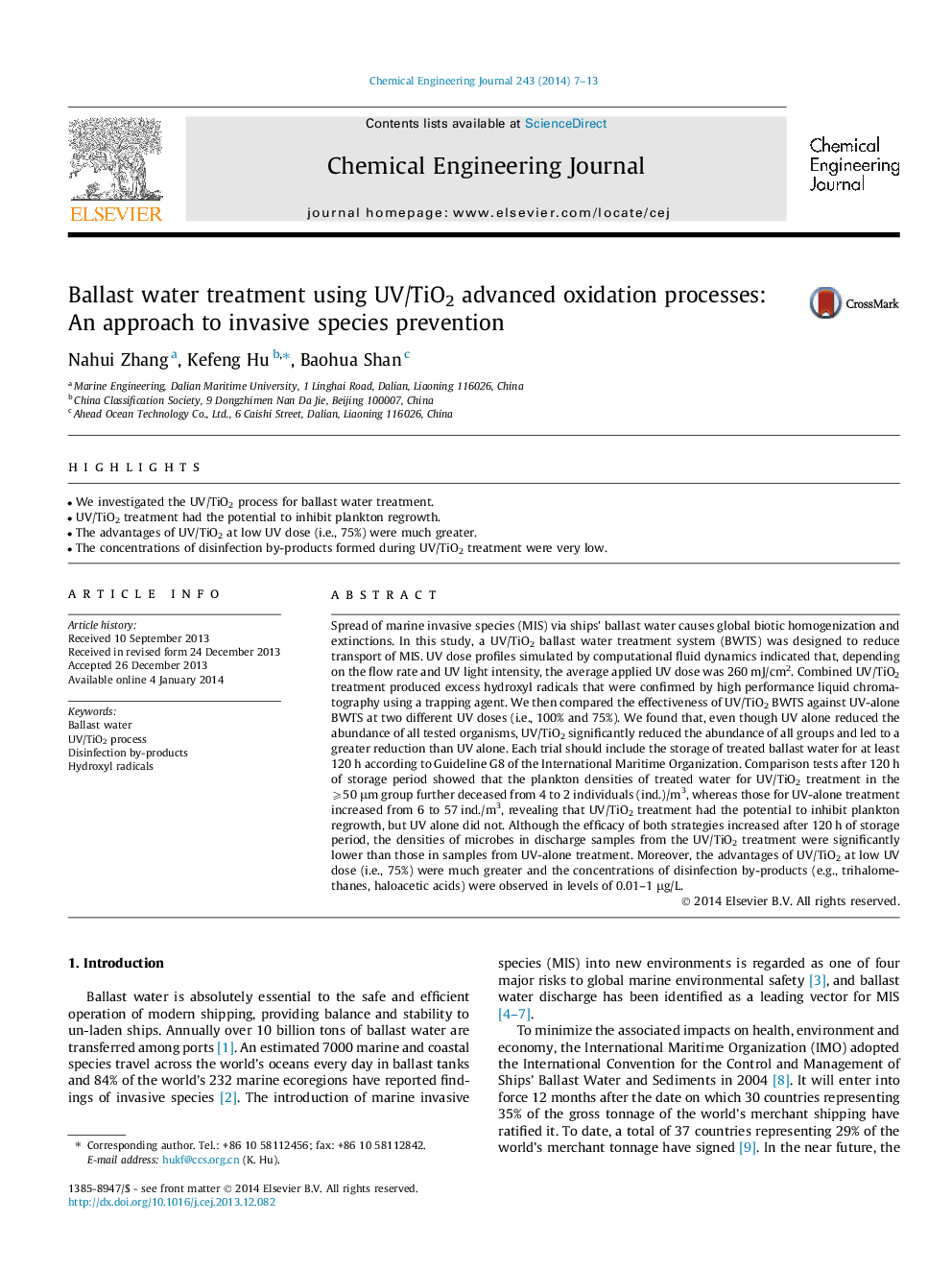| کد مقاله | کد نشریه | سال انتشار | مقاله انگلیسی | نسخه تمام متن |
|---|---|---|---|---|
| 147858 | 456401 | 2014 | 7 صفحه PDF | دانلود رایگان |

• We investigated the UV/TiO2 process for ballast water treatment.
• UV/TiO2 treatment had the potential to inhibit plankton regrowth.
• The advantages of UV/TiO2 at low UV dose (i.e., 75%) were much greater.
• The concentrations of disinfection by-products formed during UV/TiO2 treatment were very low.
Spread of marine invasive species (MIS) via ships’ ballast water causes global biotic homogenization and extinctions. In this study, a UV/TiO2 ballast water treatment system (BWTS) was designed to reduce transport of MIS. UV dose profiles simulated by computational fluid dynamics indicated that, depending on the flow rate and UV light intensity, the average applied UV dose was 260 mJ/cm2. Combined UV/TiO2 treatment produced excess hydroxyl radicals that were confirmed by high performance liquid chromatography using a trapping agent. We then compared the effectiveness of UV/TiO2 BWTS against UV-alone BWTS at two different UV doses (i.e., 100% and 75%). We found that, even though UV alone reduced the abundance of all tested organisms, UV/TiO2 significantly reduced the abundance of all groups and led to a greater reduction than UV alone. Each trial should include the storage of treated ballast water for at least 120 h according to Guideline G8 of the International Maritime Organization. Comparison tests after 120 h of storage period showed that the plankton densities of treated water for UV/TiO2 treatment in the ⩾50 μm group further deceased from 4 to 2 individuals (ind.)/m3, whereas those for UV-alone treatment increased from 6 to 57 ind./m3, revealing that UV/TiO2 treatment had the potential to inhibit plankton regrowth, but UV alone did not. Although the efficacy of both strategies increased after 120 h of storage period, the densities of microbes in discharge samples from the UV/TiO2 treatment were significantly lower than those in samples from UV-alone treatment. Moreover, the advantages of UV/TiO2 at low UV dose (i.e., 75%) were much greater and the concentrations of disinfection by-products (e.g., trihalomethanes, haloacetic acids) were observed in levels of 0.01–1 μg/L.
Journal: Chemical Engineering Journal - Volume 243, 1 May 2014, Pages 7–13